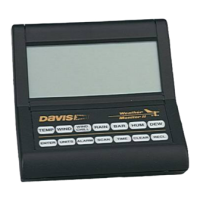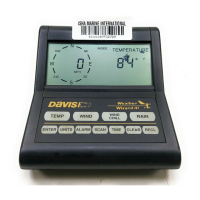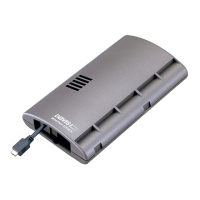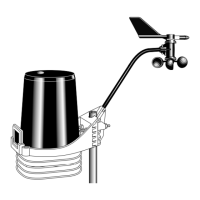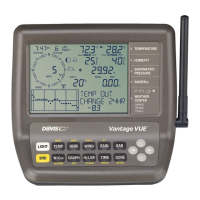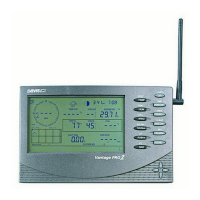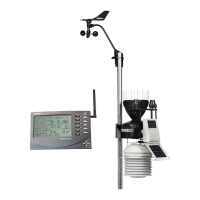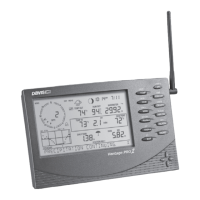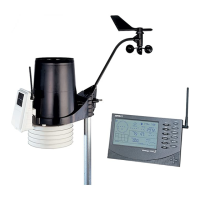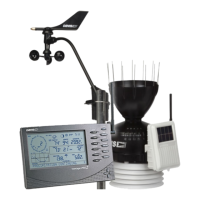page – 17
DAVIS | WeatherLink Console User Guide
davisinstruments.com
Appendices
APPENDIX A: WEATHER DATA
Refer to this appendix to learn more about the weather
variables that are measured, displayed, and logged by your
Console. Some weather variables require optional sensors.
Wind
The anemometer measures wind speed and direction. The
Console calculates a 10-minute average wind speed and
10-minute dominant wind direction. The 10-minute average
wind speed is displayed in the Console ticker whenever wind
has been selected on the Console. The last six 10-minute
dominant wind directions are included in the compass rose
wind display.
Temperature
The sensor suite houses the outside temperature sensor in
a vented and shielded enclosure that minimizes the solar
radiation induced temperature error. The Console houses the
inside temperature sensor. Additional temperature sensors
are available for wireless stations and can measure up to eight
locations.
Apparent Temperatures
Your Console calculates three apparent temperature readings:
Wind Chill, Heat Index, and the Temperature/Humidity/Sun/
Wind (THSW) Index. Apparent temperatures use additional
weather data to calculate what a human body perceives the
temperature to be in those conditions.
Wind chill
Wind chill takes into account how the speed of the wind affects
our perception of the air temperature. Our bodies warm the
surrounding air molecules by transferring heat from the skin.
If there’s no air movement, this insulating layer of warm air
molecules stays next to the body and offers some protection
from cooler air molecules. However, wind sweeps that warm
air surrounding the body away. The faster the wind blows, the
faster heat is carried away and the colder you feel. Wind has a
warming effect at higher temperatures.
Note: Wind chill is not calculated above 92° F (33° C).
Heat Index
The Heat Index uses temperature and the relative humidity
to determine how hot the air actually “feels.” When humidity
is low, the apparent temperature will be lower than the air
temperature since perspiration evaporates rapidly to cool
the body. However, when humidity is high (i.e., the air is more
saturated with water vapor) the apparent temperature “feels”
higher than the actual air temperature, because perspiration
evaporates more slowly.
Temperature/Humidity/Sun/Wind (THSW) Index
The THSW Index uses humidity and temperature like for the
Heat Index, but also includes the heating effects of sunshine
and the cooling effects of wind (like wind chill) to calculate an
apparent temperature of what it “feels” like out in the sun. The
THSW Index requires a solar radiation sensor.
Humidity
Humidity itself simply refers to the amount of water vapor
in the air. However, the total amount of water vapor that the
air can contain varies with air temperature and pressure.
Relative humidity takes into account these factors and offers
a humidity reading which reects the amount of water vapor
in the air as a percentage of the amount the air is capable of
holding. Relative humidity, therefore, is not actually a measure
of the amount of water vapor in the air, but a ratio of the air’s
water vapor content to its capacity. When we use the term
humidity in the manual and on the screen, we mean relative
humidity.
It is important to realize that relative humidity changes with
temperature, pressure, and water vapor content. A parcel of
air with a capacity for 10 g of water vapor which contains 4 g
of water vapor, the relative humidity would be 40%. Adding 2 g
more water vapor (for a total of 6 g) would change the humidity
to 60%. If that same parcel of air is then warmed so that it has
a capacity for 20 g of water vapor, the relative humidity drops
to 30% even though water vapor content does not change.
Relative humidity is a crucial factor in determining the amount
of evaporation from plants and wet surfaces since warm air
with low humidity has a large capacity to absorb extra water
vapor.
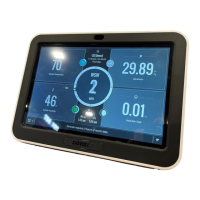
